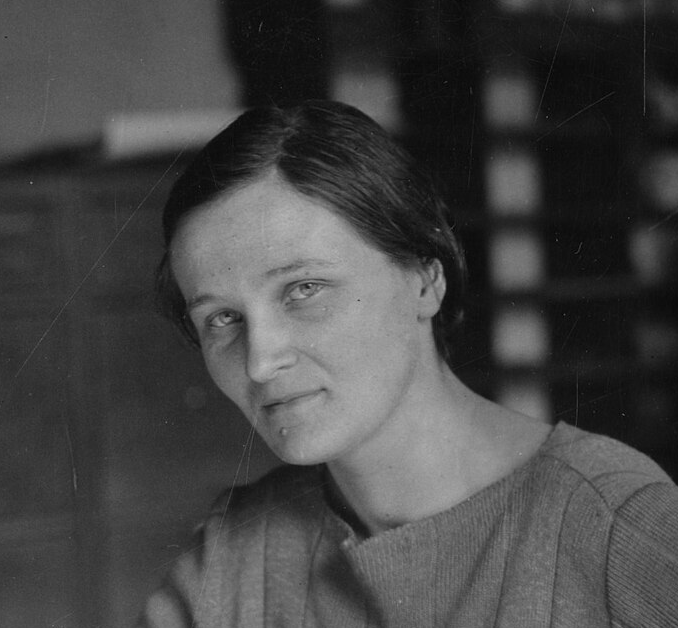
Cecilia Payne-Gaposchkin was born on May 10, 1900 in Wendover, Buckinghamshire, England. Her parents were highly educated and created an intellectually-rich environment for Cecilia and her two siblings. However, Cecilia’s father died when she was four years old and her mother had to raise the three children on her own.
Cecilia received her early education at a private school in Wendover and when she was 12 years old, moved with her family to London where she attended St. Mary’s College, Paddington. St. Mary’s did not offer her a strong program in either mathematics or science, so in 1918, she enrolled at St. Paul’s Girls’ School. The famous composer of classical music Gustav Holst, who taught at St. Paul’s, recognized her flair for music and encouraged her to pursue it as a career, but Cecilia was more interested in science.
An all-expense paid scholarship enabled Cecilia to attend Newnham College, Cambridge where she was introduced to botany, physics and chemistry. While at Cambridge she attended a lecture by Arthur Eddington on his 1919 expedition to Principe to observe a solar eclipse and verify the prediction of Einstein’s General Theory of Relativity. That event ignited her interest in astronomy, as she later explained, “The result was a complete transformation of my world picture…I experienced something like a nervous breakdown.”
Cecilia completed her studies at Cambridge in 1923 but did not receive a degree, because Cambridge did not award degrees to females before 1948. Recognizing that the only career open to her would be a teaching position at a school, Cecilia applied for a fellowship to enter the newly-established graduate astronomy program at the Harvard College Observatory in the United States. Her application was approved and Cecilia moved to the United States where she worked under the supervision of renowned astronomer Harlow Shapley.
Cecilia Payne worked tirelessly for two years, measuring the absorption lines in stellar spectra, and in 1925, she completed her doctoral thesis titled, Stellar Atmospheres; A Contribution to the Observational Study of High Temperature in the Reversing Layers of Stars. She became the first person to receive a Ph.D. at the Harvard College Observatory. Using Meghnad Saha’s ionization theory, Cecilia linked the variations in the spectral classes of stars to their degrees of ionization rather than their composition of elements. From this, she concluded that stars are composed mainly of hydrogen and helium with less than 2% of all the other elements. However, this thesis, contradicted the prevailing belief that stars and, in particular, the sun had a composition of chemical elements similar to the composition of Earth.
When Cecilia Payne’s thesis was sent to Henry Norris Russell at Princeton, he dismissed its conclusion as false, because it would contradict current theories about the composition of the sun. To avoid further conflict with the cognoscenti in astronomy, Payne softened her conclusions, describing her results as “spurious” or tentative. However, a short time later, astronomer Otto Struve would describe her dissertation as “the most brilliant Ph.D. thesis ever written in astronomy.”
In 1933, while in Germany on a European excursion, she met Sergei Gaposchkin, a Russian astrophysicist. They married the following year, and settled in Lexington, Massachusetts near Harvard. In the years that followed, Cecilia, who was now known as Cecilia Payne-Gaposchkin, continued her study of the stars, including the analysis of variable stars, Magellanic Clouds and stellar evolution. From this work emerged a variety of books, including The Stars of High Luminosity (1930), Variable Stars (1938) and Variable Stars and Galactic Structure (1954). Cecilia’s official title changed as she was promoted, but her career path was slowed because she was female.
When Cecilia Payne-Gaposchkin retired from active teaching at Harvard University in 1966, she was given the title “Professor Emerita of Harvard.” Not only had she made an extremely important contribution to astronomy, but she had also been a trail-blazer for women in academe. Cecilia Payne-Gaposchkin died at home on December 7, 1979 at the age of 79.
